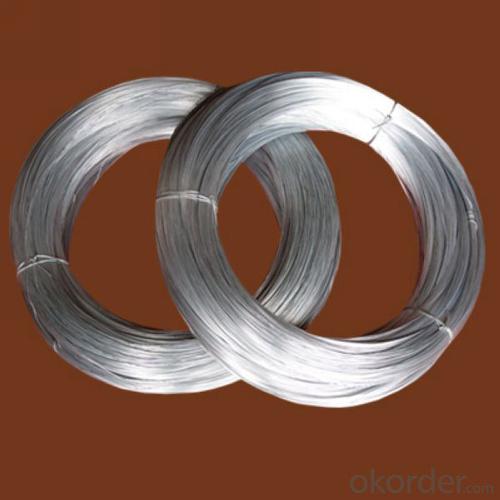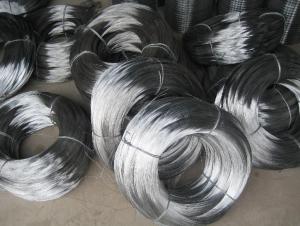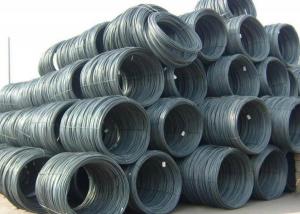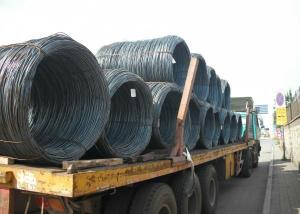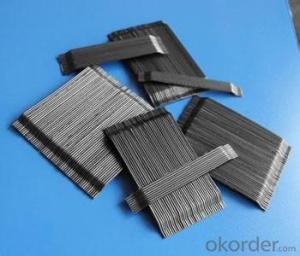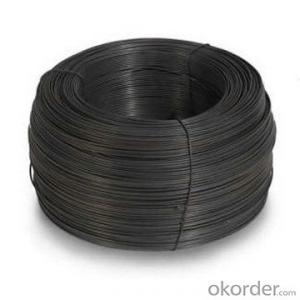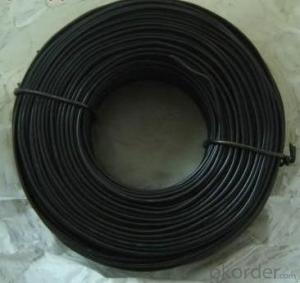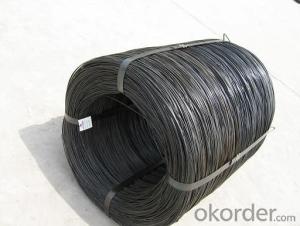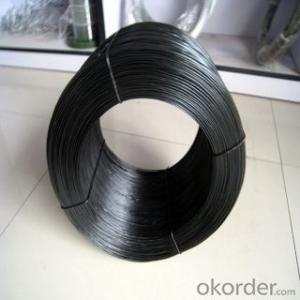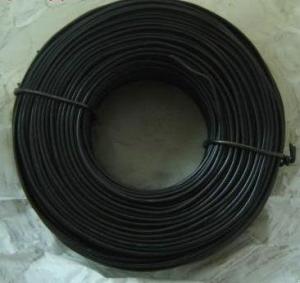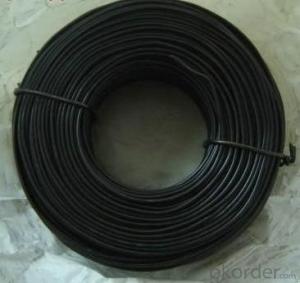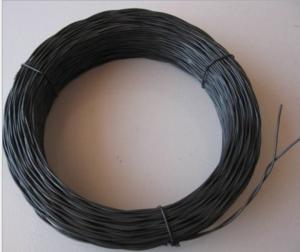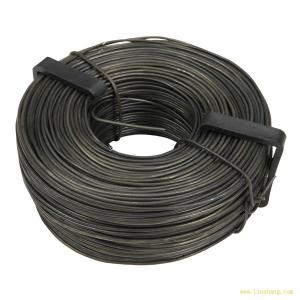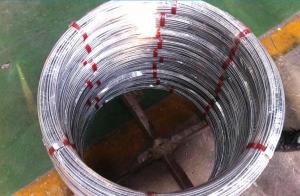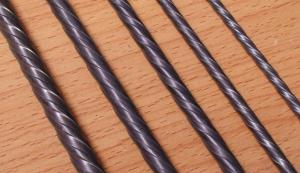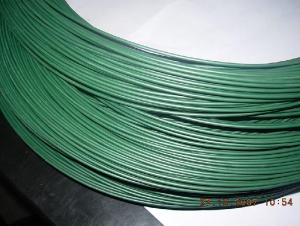Black Annealed Wire With High Quality
- Loading Port:
- Tianjin
- Payment Terms:
- TT OR LC
- Min Order Qty:
- 5 m.t.
- Supply Capability:
- 100 m.t./month
OKorder Service Pledge
OKorder Financial Service
You Might Also Like
Packaging & Delivery
| Packaging Detail: | 1.plastic inside and hessian bag outside2.plastic inside and weave bag outside3.according to customer's request |
| Delivery Detail: | 10-20 days after receive your deposit |
Specifications
1.Black Annealed Wire
2.Black Annealed Iron Wire
3.Black Annealed Binding Wire
Black Annealed Binding Wire Black Annealed Iron Wire Black Annealed Wire
1.Black Annealed Wire
2.Black Annealed Iron Wire
3.Black Annealed Binding Wire
Product Description
Material: low carbon steel wire
Process: wire drawing---acid washing---rust removing---annealing---coiling
Black Annealed Wire/Soft Annealed Wire | |
Wire Gauge | 0.5mm-6.0mm |
Tensile Strength | 30kg/70kg/mm² |
Elongation Rate | 10%-25% |
Weight | 0.1kg-800kg/Coil |
Packing | Plastic inside and hessian woven outside |
Plastic inside and nylon woven outside | |
- Q: Just moved into a new house and the basement is already wired for surround sound. The ends are two wires one silver one gold/brass wrapped together with plastic. Looks like they were cut at the ends. How difficult would it be to wore the speakers myself?
- The color coded wire will correspond to the connection of the positive and negative. You would connect the wire to the receiver, depending on the location of the speaker. Check the speaker that is already installed and see what color wire is going to what terminal on the speaker and match that connection to your receiver. Front speaker connected to the front speaker terminal of the receiver. Your receiver owners manual will also provide you with some direction. Hope this will help you out.
- Q: What does the quot;Hstand for in quot;AWG 34Hwire?Also, would Heavy Poly Nylon magnetic wire be considered enameled?
- Magnet wire is often called varnished or enameled, but it is actually insulated with a thin coating of insulating material designed specifically for the purpose. I assume that heavy poly nylon material is one of those materials. The H is probably the temperature class of the insulation. Class H insulation is rated to operate at up to 180 degrees C. Edit 1 The H could also stand for heavy as in the heavy build or double build terminology used to describe thicker than standard insulation. It is part of a specific manufacturer's catalog number rather than a part of the American Wire Gauge (AWG) designation. Manufacturer's sell many different varieties of magnet wire. The manufacturer's literature and NEMA or IEC standards provide details regarding the insulation materials used and the electrical and mechanical characteristics of the wire.
- Q: Phone wire outside was old is anybody done that, do it your self put a new wire on?, Just curious to know..
- anything after the demarcation (demarc) is your problem, anything on the telco side of the demarc is the local telco's problem. on your side, you can basically do what ever you want, but if you do it wrong, the telco has the right and OBLIGATION to disconnect your service. There are many sites on the internet that can instruct you in the Bell Standard Practice to wire your own phones. Just maintain the BSP and all will be right with the world.
- Q: How can it be possible to create a high voltage and have a small gauge wire? Example: 3gj or 3000mw in a small wire (just an example)
- Voltage don't matter. It's the amps that will kill the wire. Just have really high voltage and low current and you can have lots of power going through smaller gauge wires. That's how it's done with overhead power lines.
- Q: hi i have 2000 prizm the wires coming out of car doesnt match the colours of stereo wires does and body knows the wiring coding for car to sony cd player thanks
- determine it out making use of a DMM (digital Multi Meter) in case you already know a thank you to apply one. Ive finished it whilst each and every of the wires have been brown in a motor vehicle that by no ability orrigionally had a radio so each and every of the wires have been put in aftermarket. Im additionally MECP.
- Q: is this a wire that like is the same as buying any other one?
- If you're pushing less than 1000w rms, you should just use 10awg, if you're pushing up to 500w use 12awg.
- Q: Wire diagram for stereo to a 2000 Kia sportage
- 2000 Kia Sportage Car Audio Installation Instructions Car Radio Constant 12V+ Wire: Light Green Car Radio Ignition Switched 12V+ Wire: Black/Yellow Car Radio Ground Wire: Black Car Radio Illumination Wire: Blue/Yellow Car Radio Dimmer Wire: N/A Car Radio Antenna Trigger Wire: N/A Car Radio Amplifier Trigger Wire: N/A Front Speakers Size: 4″ Speakers Front Speakers Location: Doors Left Front Speaker Wire (+): Green Left Front Speaker Wire (-): Blue/Red Right Front Speaker Wire (+): Light Green/Yellow Right Front Speaker Wire (-): Black/Green Rear Speakers Size: 6 1/2″ Speakers Rear Speakers Location: Side Panels Left Rear Speaker Wire (+): Green/Yellow Left Rear Speaker Wire (-): Blue/Orange Right Rear Speaker Wire (+): Green/White Right Rear Speaker Wire (-): Green/Blue
- Q: My boat came with a rule 500 2-wire auto pump. I have an on/off switch at the console. My replacement has 3 wires. How do I connect the 3 wires and still use my on/off switch?
- It all depends on the function of the third wire. The instructions that came with the pump should tell you what it's for. If you're only using the pump with the switch you only need to apply 12V and a return to the pump. The switch could be in either leg, but will normally be in the +12V leg. The third wire could be an earth ground for safety or you might have a built in float switch so that you can apply 12V directly to that 3rd wire. When the internal float switch goes high enough it will turn on the bilge pump for you. Your best bet is still to read the instructions before you install it though...
- Q: Why is it that some wires get hot,having electricity flow throught them,while others don't?And why is it that when there is a lot of resistance in a wire, that it doesn't get hot?Why does the length of a wire has an effect on the temperature of that wire, and how exactly?
- Well it depends. If you varry the current the temperature of the wire will also vary. You have to take into account the actual diameter of the wire, the wider the wire, and constant current, the cooler the wire will be when you run electricity through it. If you have a wire with HIGH resistance it will get HOTTER, thats how light bulbs work.
- Q: I've been meaning to find floral wire for a DIY project I'm going to attempt. Does anyone know where to buy floral wire? I'm not sure if Michael's sells it. Please let me know from personal experiences.
- This Site Might Help You. RE: Where to buy floral wire? I've been meaning to find floral wire for a DIY project I'm going to attempt. Does anyone know where to buy floral wire? I'm not sure if Michael's sells it. Please let me know from personal experiences.
Send your message to us
Black Annealed Wire With High Quality
- Loading Port:
- Tianjin
- Payment Terms:
- TT OR LC
- Min Order Qty:
- 5 m.t.
- Supply Capability:
- 100 m.t./month
OKorder Service Pledge
OKorder Financial Service
Similar products
Hot products
Hot Searches

